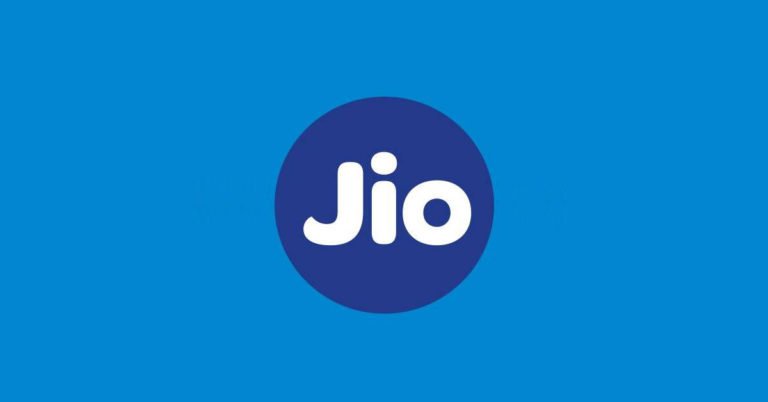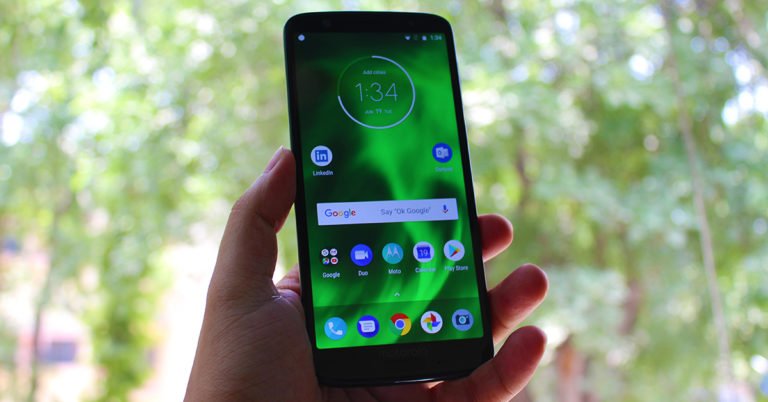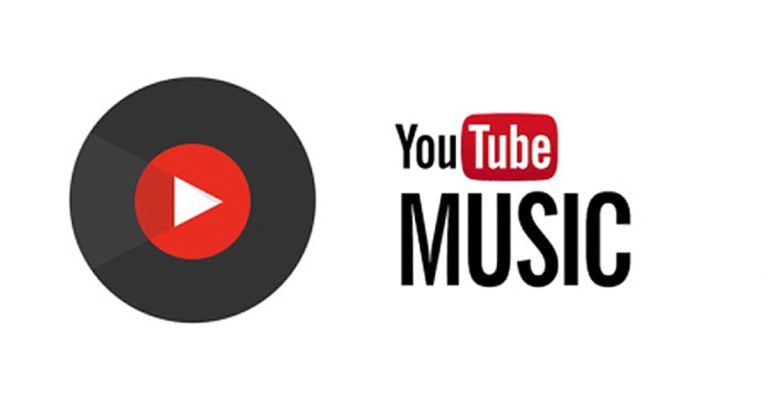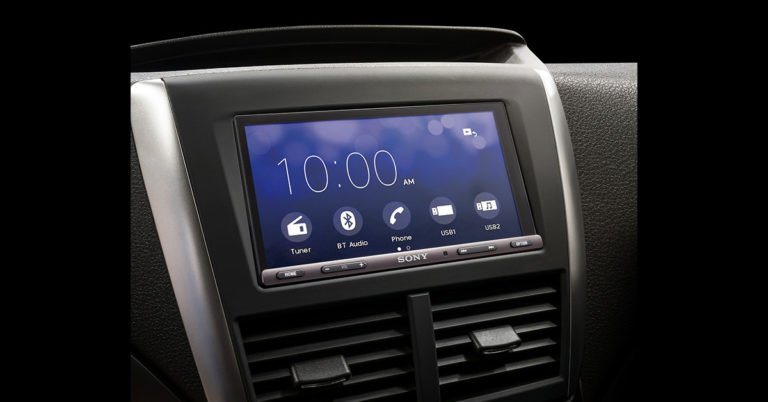SanDisk Ultra Fit USB 3.1 flash drive launched in India
Western Digital has announced SanDisk Ultra Fit USB 3.1 flash drive, which comes with a capacity of up to 256GB and according to the company, can store approximately 14,000 photos, 10 hours of full HD video and 16,000 songs.
The flash drive is also available in 16GB, 32GB, 64GB and 128GB storage options. While the price of the flash drive starts at Rs 800, the highest 256GB model costs Rs 7,590. The 32GB, 64GB, and the 128GB storage variants are priced at Rs 899, Rs Rs 1,649 and Rs 3,099 respectively.
SanDisk Ultra Fit USB 3.1 will be available exclusively on Amazon.in till July 20th and post that, it can be bought from all retail outlets. Sandisk is also offering a five year limited warranty on the flash drive.
Coming to the features, the company says that compact design of the SanDisk Ultra Fit USB 3.1 flash drive enables users to plug it in various devices — including notebooks, tablets, TVs, gaming consoles and car audio systems — and instantly get add extra, high-speed storage to them.
Sandisk Ultra Fit USB 3.1 Flash Drive enables write speeds up to 15x faster than a standard USB 2.0 drives, according to the company.
Sandisk also added that using the flash drive can copy a full-length movie in less than seconds. To make it more secure, SanDisk has added its SecureAccess software and 128-bit AES encryption software. Both of these make it easy for users to protect critical files with a password.
All that users have to do it is drag and drop the files in a vault that encrypts them and makes them private.SanDisk Ultra Fit USB 3.1 flash drive also comes with RescuePRO Deluxe data recovery software download offer which enables users to recover files that they deleted accidentally.It is also backward compatible and can be plugged into USB 3.0 or USB 2.0 port.
Kingston HyperX Alloy Elite RGB gaming keyboard launched in India
Kingston Technology’s gaming division HyperX has launched its first RGB mechanical gaming keyboard — HyperX Alloy Elite RGB – in India. Priced at Rs 15,999, the keyboard is available across all major retail stores and e-commerce websites. It comes with a two-year warranty and free technical support.
The keyboard features a steel frame and comes with a Game Mode, N-Key Rollover and functions for anti-ghosting. It is also backed by the company’s NGenuity software which enables backlight colour customisation for the keys of the HyperX Alloy Elite RGB.
HyperX Alloy Elite RGB keyboard features supplemental textured, titanium-coloured keycaps and has three custom lighting that can be saved on the keyboard’s inbuilt memory. This means that HyperX Alloy Elite RGB can light up even when it is being used on the go.
Besides this, the keyboard also has dedicated buttons for performing various tasks, a variety of CHERRY MX key switches, USB 2.0, and buttons for quick access and media. HyperX Alloy Elite RGB keyboard also comes with detachable wrist rest and is compatible with Windows 10, 8.1, 8, 7 operating systems. To sum it up, the features of the HyperX Alloy Elite RGB keyboard include:
- RGB lighting effects with a light bar
- HyperX NGenuity software for advanced customization
- Solid steel frame
- CHERRY MX mechanical key switches
- Onboard memory for profiles
- Detachable wrist rest with soft-touch coating
- Additional titanium-colored textured keycaps
Rapoo K2600 wireless keyboard with touchpad launched in India
There has not been much innovation in the wireless keyboard segment since quite some time. Small bits here and there is what we see every now and then. Rapoo is a peripheral maker who does have some decent set of wireless keyboards and mice. Today, they have launched the Rapoo K2600 wireless keyboard in the Indian market that has a large touchpad on it. This is placed on it where the numeric keypad is usually placed.
The Rapoo K2600 works on 2.4GHz wireless tech and has a working range of 10 meters, which is roughly 30 feet. So, if you have a PC in your living room or bedroom connected to the TV set, then it will come handy. This keyboard also has a set of dedicated multimedia keys on top with quick functions such as volume and going back to homepage when browsing.
Mukesh Chaudhary, Country Head, India, SAARC & ME, Rapoo Technology said, “With the sleek and elegant K2600 Wireless Touch Keyboard, Rapoo aims to continue offering customers, products which encapsulate the essence of technology as well as style.”The Rapoo K2600 supports Microsoft Windows 10 and has raised chicklet style keys for best in class ergonomics. There is sealed membrane inside the keyboard as well, which ensures that the machinery inside stays defect free and lasts for longer. In India the Rapoo K2600 will be available through its channel partners and carries a price of Rs 2,999. Finger gestures has been added to this keyboard and users can use various finger actions, such as pinch to zoom in and out. The company claims that these actions are accurate and the keyboard quickly responds to the finger stroke. This is an interesting piece of machinery Rapoo has, does seem to be a good option for people with less desk space or who want wireless compatibility.
Google’s new algorithm can train machines to predict a patient’s death
Technology giant Google has created an algorithm that can predict a number of outcomes for a patient suffering from a disease, a report in Bloomberg said. This includes forecasting how many people will stay in hospitals, their chances of getting readmitted and chance of surviving the disease or dying. This integration of artificial intelligence to predict death risks is being done by Google’s Medical Brain Team.
The report talks about a woman who was suffering from breast cancer and got a radiology scan done after getting admitted to a city hospital. It is worth mentioning that her cancer was in a late stage and fluids had already filled her lungs when she came to the hospital. Seeing her vital stats, the computers at hospital predicted a 9.3% for chance of her dying during her stay. Google differed the assessment. The technology giant’ algorithm assessed the woman and estimated the chance of her risk at 19.9%. And Google was proven to be right, as the woman passed away just 10 days after being admitted.
Google published the story of this woman in May this year in its research and highlighted how neural networks can be used in the field of health-care. For those who don’t know, neural networks are a kind of artificial intelligence that learns and improves by using data.
The report further says that medical experts are impressed by Google’s technology because of the access it had to data that was previously not available. It is even considered to be faster and more accurate than the techniques that are currently being used.
Google’s technology actually makes the machines to parse data and the neural networks not only collect data for predictions, but also showcase it to add credibility to them.
The current methods of mining health data, according to the report, are expensive, cumbersome and also consume time. Nigam Shah of Stanford University, who co-authored Google’s research said that the methods deployed today spend 80% time in ‘scut work’ of making data presentable. Google’s approach is said to avoid this.
According to Bloomberg, AI chief Jeff Dean said in revealed in May this year that in its next steps, the technology giant wants to bring its system to clinics. Google has been focussing a lot on artificial intelligence since the last few years and with these advancements, the company can foray into a new market.
However, implementation of this will surely be a challenge, moreover because it will mean giving machine learning a lot of control over which patient should get what care and when somebody would die.
Earlier, IBM Watson has also tried integrating artificial intelligence and medical science, but the company had a very tough time doing it.
This International Yoga Day download this app to learn purest form of Yog and Meditation
Today is the 4th edition of International Yoga Day. If you are one of those who wants to learn about real Yog and Sadhna (most call it Yoga in the modern world) in its purest form, then you can download this app by Dhyan Foundation called Sanatan Kriya and Vedic Chants by Yogi Ashwini. The app is available on both, Android and iOS, app stores and can be downloaded for free. You can download the Android version here and the Apple iOS version by clicking on this link here.
“A mantra is coded form of energy in the form of sound (dhwani)”, says Yogi AshwiniThe app is completely ad free, hardly takes any space on your mobile and will take you through Vedic (ancient) chants and mantras recited in the purest form by Yogi Ashwini, as it was done thousands of years ago by rishi’s and muni’s of that time. Users will find the whole process of Yog called Sanatan Kriya that takes about 30-40 minutes to complete on this app in both, Hindi and English. This is a kriya (procedure) that can be done on a daily basis and is very simple to follow. One can even download the audio on their mobile phones and other devices if they are worried about mobile internet usage. This kriya brings your body back into balance and health, just remember to keep your spine straight to reap maximum benefit. Over that, the app also has as special Vedic Chants section, where users will find lot of Vedic mantras and chants. The app enables users to learn and perform the chants, and mantras in the correct manner. You will find everything from the OM chant to the Ram Chant on it. Mantras include, Shri Gayatri Mantra, Poorna Mantra and Shri Mahamrityunjai Mantra. There is full Hanuman Chalisa also available on this app. We would like to specially mention about the Shanti Path audio in the app. This mantra does wonders if you are feeling hyper in any manner. We have tried it out ourselves and it always relaxes our mind and body. Overall, this is a great app by Dhyan Foundation and is a must download. It is easy to navigate and one will not be lost in it. There are plenty of other activities which Dhyan Foundation does to spread the true meaning of Yoga, to know more about it you can head over to www.dhyanfoundation.com. They also have free Yoga sessions every week too, in all major cities of India (like Delhi, Mumbai, Chennai, Bangalore, Hyderabad, Kolkata, Ludhiana Etc) and also abroad like Canada, Germany and UK.
[Video] RHA MA650 Unboxing and First Look
The RHA MA650 are now available in India in white colour and they look sizzling hot. These retail for Rs 7,999 in India. These are designed in UK by RHA and come with over 7 ear plug types. These are splash proof and come with IPX4 rating.
Tech Specs:
- Custom dynamic driver (model 380.1), engineered to deliver an accurate, clear listening experience
- Aerophonic housings, designed to channel sound to the listener without distortion. Contoured secure flex cable.
- 12 hour battery life with NFC for easy device pairing.
- aptX and AAC compatible for high quality stereo audio via Bluetooth streaming. Splash and sweatproof to IPX4 rating.
- High grade 6063 aluminium construction for durability and effective sound delivery
Reliance Jio offers extra 1.5GB daily data on these plans
Ever since it made its debut in the Indian telecom industry, Reliance Jio has time and again come up with offers that customers find hard to resist. And it has done the same yet again. The telecom major will now be offering 4.5 GB data per day along with unlimited calls under its Rs 299 plan.
This means, users will get a total of 126GB data with a validity of 28 days at Rs 299. Prior to the revision, people who recharged with the Rs 299 plan got 3GB of data per day along with calling and SMS benefits.
However, the offer is valid for a limited period. In order to get 126GB of data for 28 days, users will have to get a recharge of Rs 299 done before 30th June.
Customers buying the plan also get to use all Jio apps for free including the JioTV app on which users can watch the ongoing FIFA World Cup matches.
That’s not all. Other plans from Reliance Jio have got updated too.
Jio’s Rs 149, Rs 349, Rs 399 and Rs 449 plans offered up to 1.5GB data per day earlier, but will now offer 3GB of daily data.
Also, Rs 198, Rs 398, Rs 448 and Rs 498 plans earlier offered 2GB daily data, but will now offer 3.5GB data per day.
And those buying the Rs 509 plan can enjoy up to 5.5GB of data every day instead of the 4GB data that they got earlier. But even they aren’t the ones who’ll be getting the most data.
Reliance Jio’s Rs 799 plan earlier offered 5GB data to customers. But now, that has been beefed up by 1.5GB too. So, customers will be able to avail 6.5GB data per day with Rs 799 plan.
And if there are some who still don’t find these offers tempting, Jio is also offering a discount of Rs 100 on all recharges over Rs 300 done by PhonePe wallet. Furthermore, a discount of 20% can be availed on recharges below Rs 300 done via the mobile wallet.
Moto G6 Review: Premium looks, performance could have been better
We have been huge fanboys of Motorola phones since its inception in India, more than two decades ago. The Moto RAZR series was one of our favorite at the time and no one came close to it when it boiled down to premium looks and thin bezels. Couple of decades later the game has changed and smartphones have taken over the world. Moto too has changes its strategy, but has seen some turbulent times. They recently launched the Moto G6 in India, after its debut in Brazil. We ran our usual tests on this smartphone and this is how it fared on our review bench.
Design and blueprint
Let’s start with the aesthetics. The Moto G6 is inspired by the Moto X4, you will find a lot of similarities between the two starting from the watch dial like dual camera cluster at the back to the all glass rear panel and curved edge design. Being inspired sometimes is taken in the negative sense, but in this case it is good. Since the worthy stuff from the more expensive Moto X4 has come down to the budget smartphone Moto G6.
 Dressed in midnight blue, the Moto G6 sports an aluminum band around the edges, which has the power button and volume rocker key on the right, a curved dual SIM tray on top and USB type C charging port along with a 3.5 mm audio jack at the bottom. There is no speaker grille on this mobile, you ask why? Because the ear piece doubles up as the loud speaker. This is both a good and bad thing, you can enjoy media better with a front firing speaker, but at the same time chances of it getting ruined are higher and your call quality might go down.
The front of the smartphone has a large 5.7-inch display with 75.4 percent screen to body ratio. This is accompanied by Corning Gorilla Glass 3, which protects it from dust and thuds. The touchscreen is FHD+ (1080×2160 pixels resolution) and has an aspect ratio of 18:9 with 424 ppi density. On top of the screen users will also find couple of sensors like the proximity one, under the screen the company has placed its logo and a haptic touch sensitive button.
Dressed in midnight blue, the Moto G6 sports an aluminum band around the edges, which has the power button and volume rocker key on the right, a curved dual SIM tray on top and USB type C charging port along with a 3.5 mm audio jack at the bottom. There is no speaker grille on this mobile, you ask why? Because the ear piece doubles up as the loud speaker. This is both a good and bad thing, you can enjoy media better with a front firing speaker, but at the same time chances of it getting ruined are higher and your call quality might go down.
The front of the smartphone has a large 5.7-inch display with 75.4 percent screen to body ratio. This is accompanied by Corning Gorilla Glass 3, which protects it from dust and thuds. The touchscreen is FHD+ (1080×2160 pixels resolution) and has an aspect ratio of 18:9 with 424 ppi density. On top of the screen users will also find couple of sensors like the proximity one, under the screen the company has placed its logo and a haptic touch sensitive button. Users can enable the one touch button control, after which the bottom nav bar on the screen disappears. So, how does one navigate then? By using finger gestures on this haptic button. For example, to go back to the previous page on the browser you can swipe left on the button. Swipe right and the OS will show the list of open apps.
Performance, camera and features
This is a place where Moto G6 left us with a mixed bag of feelings. While we loved the camera performance, sound quality and the excellent display, there was the occasional speed issue with the device that was off-putting. But first, let’s talk about its specifications. The Moto G6 comes in two variants one with 3GB RAM and 32 GB storage, and the other with 4 GB RAM and 64 GB storage. We were using the 4 GB RAM version.
With it the device has Qualcomm Snapdragon 450 Octa core SoC supporting 1.8GHz clock speed. Graphics are powered by Adreno 506 chipset and the Moto G6 runs Android 8.0 not 8.1 like the other devices in this price bracket. The memory can be upgraded by up to 256GB using a microSD card and the phone has two nano SIM slots with it. Everything on paper seems fine, except that eye hurting Snapdragon 450 CPU. Frankly, in this price range its competition has much better chipset options.
Because of the same, we experienced occasional slowdowns while switching between apps and when browsing (when multiple tabs are open). Graphical game performance is not super either. Yes, the display does full justice to the device, but you cannot play graphic hungry games like PUBG on it properly. We ran the AnTuTu benchmark on it, where it scored just 61,496 points. On Geekbench 4’s compute test it got only 2,295 points, while on the multi-core CPU test it got 3,147 marks. All of it showcase subpar performance.
Moving past that, there are some good features of the smartphone besides its superior looks. We loved the movie watching experience on it and it got better with the ear plugs that come in the box. The cameras work well with the rear powered by a 12MP primary plus 5MP secondary sensor that adds depth (bokeh effect). They are just a step behind the competition, but do have features that will give the opposition a run for its money. One in particular we loved is the spot colour mode, where the user can select a colour on screen and only that colour stays and rest of the picture turns grayscale.
Users can enable the one touch button control, after which the bottom nav bar on the screen disappears. So, how does one navigate then? By using finger gestures on this haptic button. For example, to go back to the previous page on the browser you can swipe left on the button. Swipe right and the OS will show the list of open apps.
Performance, camera and features
This is a place where Moto G6 left us with a mixed bag of feelings. While we loved the camera performance, sound quality and the excellent display, there was the occasional speed issue with the device that was off-putting. But first, let’s talk about its specifications. The Moto G6 comes in two variants one with 3GB RAM and 32 GB storage, and the other with 4 GB RAM and 64 GB storage. We were using the 4 GB RAM version.
With it the device has Qualcomm Snapdragon 450 Octa core SoC supporting 1.8GHz clock speed. Graphics are powered by Adreno 506 chipset and the Moto G6 runs Android 8.0 not 8.1 like the other devices in this price bracket. The memory can be upgraded by up to 256GB using a microSD card and the phone has two nano SIM slots with it. Everything on paper seems fine, except that eye hurting Snapdragon 450 CPU. Frankly, in this price range its competition has much better chipset options.
Because of the same, we experienced occasional slowdowns while switching between apps and when browsing (when multiple tabs are open). Graphical game performance is not super either. Yes, the display does full justice to the device, but you cannot play graphic hungry games like PUBG on it properly. We ran the AnTuTu benchmark on it, where it scored just 61,496 points. On Geekbench 4’s compute test it got only 2,295 points, while on the multi-core CPU test it got 3,147 marks. All of it showcase subpar performance.
Moving past that, there are some good features of the smartphone besides its superior looks. We loved the movie watching experience on it and it got better with the ear plugs that come in the box. The cameras work well with the rear powered by a 12MP primary plus 5MP secondary sensor that adds depth (bokeh effect). They are just a step behind the competition, but do have features that will give the opposition a run for its money. One in particular we loved is the spot colour mode, where the user can select a colour on screen and only that colour stays and rest of the picture turns grayscale. The shots during the day were nice and crisp, in low-light or at night the edges did lose some of its sheen. Videos too were bright and nice, but we have defiantly seen better from the Honor’s and Xiaomi’s in this price bracket. Front camera is powered by a 16MP sensor with LED flash. This the company says is one of Moto G6’s main features. The images here are good and become better when using the LED flash. The front camera can also record video at 1080p. A better resolution is always favoured these days on social networks and the Moto G6 front camera delivered a good close to life colour experience for that.
The shots during the day were nice and crisp, in low-light or at night the edges did lose some of its sheen. Videos too were bright and nice, but we have defiantly seen better from the Honor’s and Xiaomi’s in this price bracket. Front camera is powered by a 16MP sensor with LED flash. This the company says is one of Moto G6’s main features. The images here are good and become better when using the LED flash. The front camera can also record video at 1080p. A better resolution is always favoured these days on social networks and the Moto G6 front camera delivered a good close to life colour experience for that.
 Battery lasted for more than 22 hours for us, even though it has just 3,000 mAh of it. We used the phone nominally with mixed use of WiFi and 4G. Our usage also included playing few YouTube videos during the day, voice calls and a game or two here and there. For heavy users the battery life will drop further, but keep the charger handy as it can turbo charge the phone in minutes.
The Moto G6 comes with Android 8.0 not 8.1 on it. Which does not take away from the experience, but one would want the absolute latest in terms of OS when buying a new device. Moto actions do play house in this smartphone and all the lovely features come here. Like a quick twist of the hand opens the camera app and if you chop twice the torch is enabled. Also, if you want to take a screen shot just press three fingers on the screen and the device will take a screen grab.
There is no dedicated button for the app drawer on the Moto G6, but one can swipe up on the home screen and the list of apps will be shown. There is no bloatware on it too, which does give it an additional star on our rating sheet.
Verdict and final thoughts
All in all, we liked and disliked the device. We absolutely love how it looks and feels in the hand, even though the rear panel is a fingerprint magnet. We just cannot get over the price bracket it is in and the kind of chipset it offers here. If you are looking for a trendy phone with a great selfie camera and a great screen in a budget, the Moto G6 could be your best buy. But if you are looking for extreme performance, you might want to look elsewhere.
Pros: Good Screen, great looks, decent cameras
Cons: Mediocre performance, Android 8.0
Battery lasted for more than 22 hours for us, even though it has just 3,000 mAh of it. We used the phone nominally with mixed use of WiFi and 4G. Our usage also included playing few YouTube videos during the day, voice calls and a game or two here and there. For heavy users the battery life will drop further, but keep the charger handy as it can turbo charge the phone in minutes.
The Moto G6 comes with Android 8.0 not 8.1 on it. Which does not take away from the experience, but one would want the absolute latest in terms of OS when buying a new device. Moto actions do play house in this smartphone and all the lovely features come here. Like a quick twist of the hand opens the camera app and if you chop twice the torch is enabled. Also, if you want to take a screen shot just press three fingers on the screen and the device will take a screen grab.
There is no dedicated button for the app drawer on the Moto G6, but one can swipe up on the home screen and the list of apps will be shown. There is no bloatware on it too, which does give it an additional star on our rating sheet.
Verdict and final thoughts
All in all, we liked and disliked the device. We absolutely love how it looks and feels in the hand, even though the rear panel is a fingerprint magnet. We just cannot get over the price bracket it is in and the kind of chipset it offers here. If you are looking for a trendy phone with a great selfie camera and a great screen in a budget, the Moto G6 could be your best buy. But if you are looking for extreme performance, you might want to look elsewhere.
Pros: Good Screen, great looks, decent cameras
Cons: Mediocre performance, Android 8.0
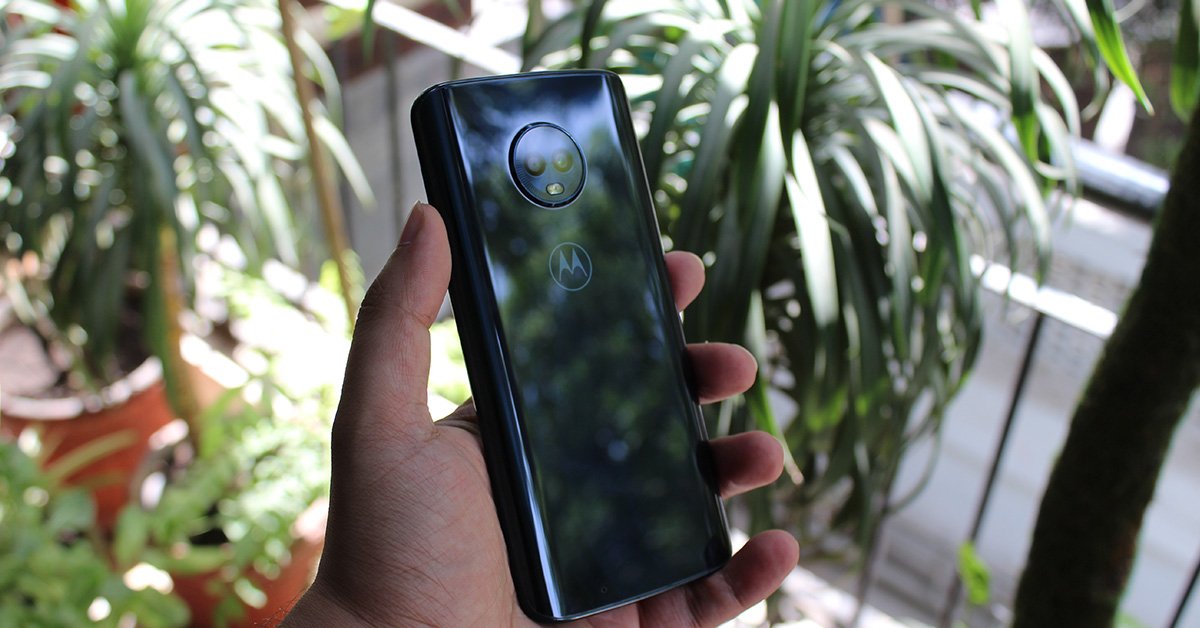 Dressed in midnight blue, the Moto G6 sports an aluminum band around the edges, which has the power button and volume rocker key on the right, a curved dual SIM tray on top and USB type C charging port along with a 3.5 mm audio jack at the bottom. There is no speaker grille on this mobile, you ask why? Because the ear piece doubles up as the loud speaker. This is both a good and bad thing, you can enjoy media better with a front firing speaker, but at the same time chances of it getting ruined are higher and your call quality might go down.
The front of the smartphone has a large 5.7-inch display with 75.4 percent screen to body ratio. This is accompanied by Corning Gorilla Glass 3, which protects it from dust and thuds. The touchscreen is FHD+ (1080×2160 pixels resolution) and has an aspect ratio of 18:9 with 424 ppi density. On top of the screen users will also find couple of sensors like the proximity one, under the screen the company has placed its logo and a haptic touch sensitive button.
Dressed in midnight blue, the Moto G6 sports an aluminum band around the edges, which has the power button and volume rocker key on the right, a curved dual SIM tray on top and USB type C charging port along with a 3.5 mm audio jack at the bottom. There is no speaker grille on this mobile, you ask why? Because the ear piece doubles up as the loud speaker. This is both a good and bad thing, you can enjoy media better with a front firing speaker, but at the same time chances of it getting ruined are higher and your call quality might go down.
The front of the smartphone has a large 5.7-inch display with 75.4 percent screen to body ratio. This is accompanied by Corning Gorilla Glass 3, which protects it from dust and thuds. The touchscreen is FHD+ (1080×2160 pixels resolution) and has an aspect ratio of 18:9 with 424 ppi density. On top of the screen users will also find couple of sensors like the proximity one, under the screen the company has placed its logo and a haptic touch sensitive button. Users can enable the one touch button control, after which the bottom nav bar on the screen disappears. So, how does one navigate then? By using finger gestures on this haptic button. For example, to go back to the previous page on the browser you can swipe left on the button. Swipe right and the OS will show the list of open apps.
Performance, camera and features
This is a place where Moto G6 left us with a mixed bag of feelings. While we loved the camera performance, sound quality and the excellent display, there was the occasional speed issue with the device that was off-putting. But first, let’s talk about its specifications. The Moto G6 comes in two variants one with 3GB RAM and 32 GB storage, and the other with 4 GB RAM and 64 GB storage. We were using the 4 GB RAM version.
With it the device has Qualcomm Snapdragon 450 Octa core SoC supporting 1.8GHz clock speed. Graphics are powered by Adreno 506 chipset and the Moto G6 runs Android 8.0 not 8.1 like the other devices in this price bracket. The memory can be upgraded by up to 256GB using a microSD card and the phone has two nano SIM slots with it. Everything on paper seems fine, except that eye hurting Snapdragon 450 CPU. Frankly, in this price range its competition has much better chipset options.
Because of the same, we experienced occasional slowdowns while switching between apps and when browsing (when multiple tabs are open). Graphical game performance is not super either. Yes, the display does full justice to the device, but you cannot play graphic hungry games like PUBG on it properly. We ran the AnTuTu benchmark on it, where it scored just 61,496 points. On Geekbench 4’s compute test it got only 2,295 points, while on the multi-core CPU test it got 3,147 marks. All of it showcase subpar performance.
Moving past that, there are some good features of the smartphone besides its superior looks. We loved the movie watching experience on it and it got better with the ear plugs that come in the box. The cameras work well with the rear powered by a 12MP primary plus 5MP secondary sensor that adds depth (bokeh effect). They are just a step behind the competition, but do have features that will give the opposition a run for its money. One in particular we loved is the spot colour mode, where the user can select a colour on screen and only that colour stays and rest of the picture turns grayscale.
Users can enable the one touch button control, after which the bottom nav bar on the screen disappears. So, how does one navigate then? By using finger gestures on this haptic button. For example, to go back to the previous page on the browser you can swipe left on the button. Swipe right and the OS will show the list of open apps.
Performance, camera and features
This is a place where Moto G6 left us with a mixed bag of feelings. While we loved the camera performance, sound quality and the excellent display, there was the occasional speed issue with the device that was off-putting. But first, let’s talk about its specifications. The Moto G6 comes in two variants one with 3GB RAM and 32 GB storage, and the other with 4 GB RAM and 64 GB storage. We were using the 4 GB RAM version.
With it the device has Qualcomm Snapdragon 450 Octa core SoC supporting 1.8GHz clock speed. Graphics are powered by Adreno 506 chipset and the Moto G6 runs Android 8.0 not 8.1 like the other devices in this price bracket. The memory can be upgraded by up to 256GB using a microSD card and the phone has two nano SIM slots with it. Everything on paper seems fine, except that eye hurting Snapdragon 450 CPU. Frankly, in this price range its competition has much better chipset options.
Because of the same, we experienced occasional slowdowns while switching between apps and when browsing (when multiple tabs are open). Graphical game performance is not super either. Yes, the display does full justice to the device, but you cannot play graphic hungry games like PUBG on it properly. We ran the AnTuTu benchmark on it, where it scored just 61,496 points. On Geekbench 4’s compute test it got only 2,295 points, while on the multi-core CPU test it got 3,147 marks. All of it showcase subpar performance.
Moving past that, there are some good features of the smartphone besides its superior looks. We loved the movie watching experience on it and it got better with the ear plugs that come in the box. The cameras work well with the rear powered by a 12MP primary plus 5MP secondary sensor that adds depth (bokeh effect). They are just a step behind the competition, but do have features that will give the opposition a run for its money. One in particular we loved is the spot colour mode, where the user can select a colour on screen and only that colour stays and rest of the picture turns grayscale. The shots during the day were nice and crisp, in low-light or at night the edges did lose some of its sheen. Videos too were bright and nice, but we have defiantly seen better from the Honor’s and Xiaomi’s in this price bracket. Front camera is powered by a 16MP sensor with LED flash. This the company says is one of Moto G6’s main features. The images here are good and become better when using the LED flash. The front camera can also record video at 1080p. A better resolution is always favoured these days on social networks and the Moto G6 front camera delivered a good close to life colour experience for that.
The shots during the day were nice and crisp, in low-light or at night the edges did lose some of its sheen. Videos too were bright and nice, but we have defiantly seen better from the Honor’s and Xiaomi’s in this price bracket. Front camera is powered by a 16MP sensor with LED flash. This the company says is one of Moto G6’s main features. The images here are good and become better when using the LED flash. The front camera can also record video at 1080p. A better resolution is always favoured these days on social networks and the Moto G6 front camera delivered a good close to life colour experience for that.
 Battery lasted for more than 22 hours for us, even though it has just 3,000 mAh of it. We used the phone nominally with mixed use of WiFi and 4G. Our usage also included playing few YouTube videos during the day, voice calls and a game or two here and there. For heavy users the battery life will drop further, but keep the charger handy as it can turbo charge the phone in minutes.
The Moto G6 comes with Android 8.0 not 8.1 on it. Which does not take away from the experience, but one would want the absolute latest in terms of OS when buying a new device. Moto actions do play house in this smartphone and all the lovely features come here. Like a quick twist of the hand opens the camera app and if you chop twice the torch is enabled. Also, if you want to take a screen shot just press three fingers on the screen and the device will take a screen grab.
There is no dedicated button for the app drawer on the Moto G6, but one can swipe up on the home screen and the list of apps will be shown. There is no bloatware on it too, which does give it an additional star on our rating sheet.
Verdict and final thoughts
All in all, we liked and disliked the device. We absolutely love how it looks and feels in the hand, even though the rear panel is a fingerprint magnet. We just cannot get over the price bracket it is in and the kind of chipset it offers here. If you are looking for a trendy phone with a great selfie camera and a great screen in a budget, the Moto G6 could be your best buy. But if you are looking for extreme performance, you might want to look elsewhere.
Pros: Good Screen, great looks, decent cameras
Cons: Mediocre performance, Android 8.0
Battery lasted for more than 22 hours for us, even though it has just 3,000 mAh of it. We used the phone nominally with mixed use of WiFi and 4G. Our usage also included playing few YouTube videos during the day, voice calls and a game or two here and there. For heavy users the battery life will drop further, but keep the charger handy as it can turbo charge the phone in minutes.
The Moto G6 comes with Android 8.0 not 8.1 on it. Which does not take away from the experience, but one would want the absolute latest in terms of OS when buying a new device. Moto actions do play house in this smartphone and all the lovely features come here. Like a quick twist of the hand opens the camera app and if you chop twice the torch is enabled. Also, if you want to take a screen shot just press three fingers on the screen and the device will take a screen grab.
There is no dedicated button for the app drawer on the Moto G6, but one can swipe up on the home screen and the list of apps will be shown. There is no bloatware on it too, which does give it an additional star on our rating sheet.
Verdict and final thoughts
All in all, we liked and disliked the device. We absolutely love how it looks and feels in the hand, even though the rear panel is a fingerprint magnet. We just cannot get over the price bracket it is in and the kind of chipset it offers here. If you are looking for a trendy phone with a great selfie camera and a great screen in a budget, the Moto G6 could be your best buy. But if you are looking for extreme performance, you might want to look elsewhere.
Pros: Good Screen, great looks, decent cameras
Cons: Mediocre performance, Android 8.0
YouTube Music and YouTube Premium officially launched in 17 countries
Music is a big multi-billion-dollar industry around the world. Google had showcased YouTube Music in May and now they have gone ahead and officially launched it in 17 countries around the world, and no India is not part of it, as yet. With YouTube Music, Google has also launched YouTube Premium, which will take the position of YouTube Red.
YouTube Music service in USA can be availed for $9.99 per month, while YouTube Premium service has a price tag of $11.99 per month. Currently, both the services are available in USA, Australia, Austria, Canada, Finland, France, Germany, Ireland, Italy, Mexico, New Zealand, Norway, Russia, South Korea, Spain, Sweden and UK.
Both the services are basically free in these countries where users can play music, watch videos, listen to full albums, see live performances and more. It also understands your liking and disliking’s and displays content according to your taste. But, the free service comes with ads in it, if you do not want ads then you would need to pay $9.99 per month for the YouTube Music service or $11.99 for YouTube Premium service that will be completely advertisement free.
YouTube Premium is same as YouTube Red and has all the functionalities of YouTube Music. However, the premium service throws in all the ad free videos that are not found on the music service along with the option to download them. You can watch online series on YouTube Premium as well, such as Cobra Kai etc. New users can try both the services for free for the first three months, which is 2 months more than Netflix, which also has its own line-up of original online series and has partnered with big Hollywood studios such as Marvel.
If you already have a YouTube Red subscription, you will automatically be upgraded to YouTube Premium. Sadly, the service is not available as yet in India and there is no clear indication on when both the services will be available here. Till we get clarity, if you want to hear Bollywood music, you can try the Google Play app available on Android smartphones.
Sony XAV-AX5000 in-car entertainment system with Android Auto and 6.95-inch touchscreen launched in India
When it comes to ICE (in-car entertainment) systems in India, Sony tops the list in both the in-dash system and the speakers that go with it. The Japanese company has introduced a really cool new AV receiver here in India called the Sony XAV-AX5000. This one retails for Rs 24,990 and sports a 6.95-inch bezel-less touch display.
The main attraction of the Sony XAV-AX5000 is that it is both Android Auto and Apple CarPlay ready. Users can easily connect there Android or iOS devices to the Sony’s ICE system and get important messages on screen. Users can also make or receive calls, send messages and even access and play music from their mobile device through it.
The Sony XAV-AX5000 was first showcased at CES 2018 and now finally is available in India. The touch screen has card type buttons on it. There are some physical keys at the bottom of the panel as well, from where users can increase or decrease volume, go to the home screen or options menu and skip a track, too. There are dual USB ports available on it, so one can connect two devices to it at the same time.
This in-dash receiver by Sony is rear view camera compatible, so if a user wants to install a rear camera later, he/she would not require an additional screen for it. The Sony XAV-AX5000 does boast of Extra Bass circuitry which enables the device to produce clear sound with good amount of bass. Sony says it helps the system to overcome any type of engine noise and users get pure resonance without ambient sound. A 10 band equaliser has been added to the mix with 10 pre-sets. Audio files such as FLAC and MP3 are supported on the Sony XAV-AX5000.
The quick wakeup feature introduced in the system, reduces lag between the engine start and device start time. Sony claims that as soon as you turn the ignition the Sony XAV-AX5000 wakes up and is ready to play your favourite tunes.


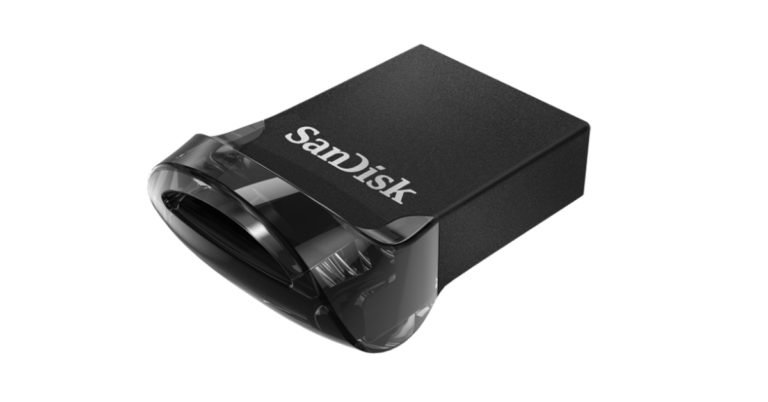
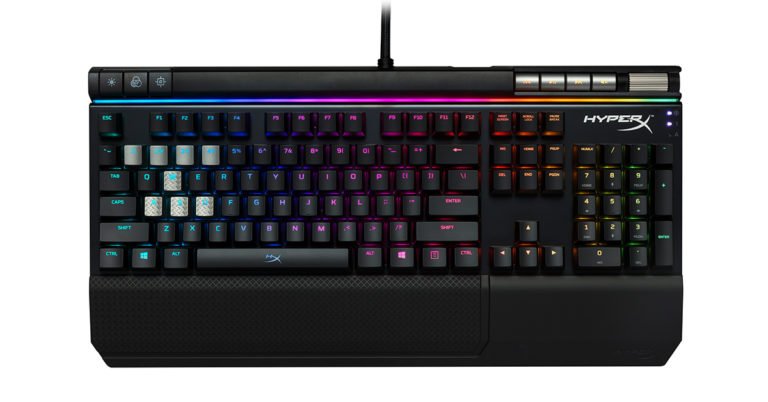
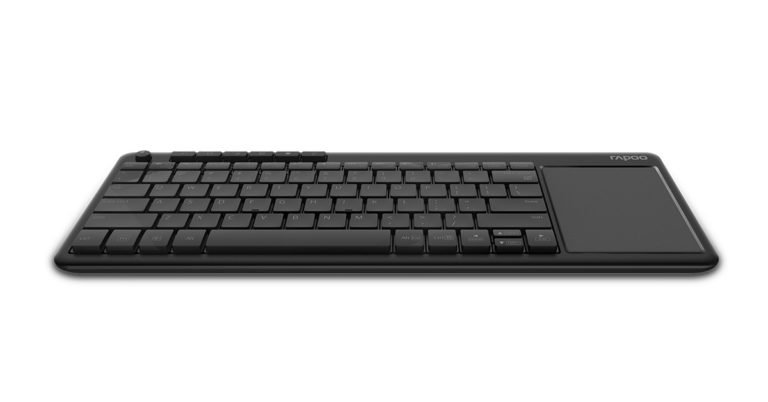

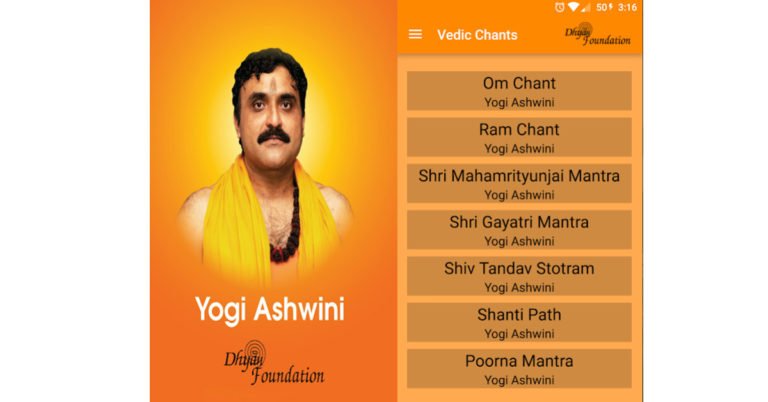
![[Video] RHA MA650 Unboxing and First Look [Video] RHA MA650 Unboxing and First Look](https://www.gadgetbridge.com/wp-content/uploads/2018/06/maxresdefault-2-768x432.jpg)
